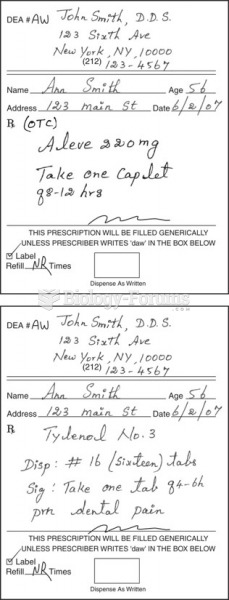|
|
|
Cytomegalovirus affects nearly the same amount of newborns every year as Down syndrome.
Before a vaccine is licensed in the USA, the Food and Drug Administration (FDA) reviews it for safety and effectiveness. The CDC then reviews all studies again, as well as the American Academy of Pediatrics and the American Academy of Family Physicians. Every lot of vaccine is tested before administration to the public, and the FDA regularly inspects vaccine manufacturers' facilities.
Egg cells are about the size of a grain of sand. They are formed inside of a female's ovaries before she is even born.
The immune system needs 9.5 hours of sleep in total darkness to recharge completely.
The U.S. Preventive Services Task Force recommends that all women age 65 years of age or older should be screened with bone densitometry.







